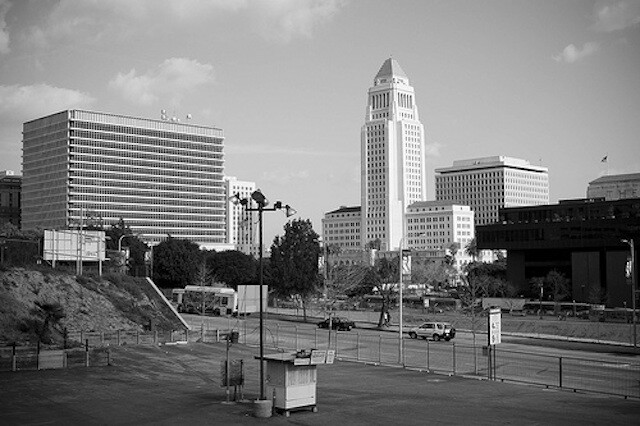With our free press under threat and federal funding for public media gone, your support matters more than ever. Help keep the LAist newsroom strong, become a monthly member or increase your support today.
This is an archival story that predates current editorial management.
This archival content was written, edited, and published prior to LAist's acquisition by its current owner, Southern California Public Radio ("SCPR"). Content, such as language choice and subject matter, in archival articles therefore may not align with SCPR's current editorial standards. To learn more about those standards and why we make this distinction, please click here.
Laying Off 1,000 City Hall Employees is Only a Third of the Solution

Photo by RebelSciences [Kwasi B.] via LAist Featured Photos on Flickr
A mid-year budget report addressed to Mayor Villaraigosa and the Los Angeles City Council last Friday evening had sobering, but not surprising news. Los Angeles is in deep financial trouble and it's going to take years to get out of it.
"This report confirms what we've known - this is the biggest recession we've seen since the Great Depression and the City of Los Angeles is not immune," said Council President Eric Garcetti in a statement. "Our goal will be to protect core services and maintain our city's financial health, and failure is not an option."
After the recession of the early 1990s, "it took five years for the major taxes to return to the pre-recession level and it took nine years for the City's most economy-sensitive revenue, the sales tax, to fully recover," explained the City's top Administrative Officer, Miguel Santana, in a memo about the report. "This lag is because rising employment and higher consumer spending trail economic recovery and actual City receipt of tax revenue lags consumer spending. Simply stated, local government revenue cannot recover from a severe recession until well after the recession ends."
Layoffs and even dipping into the reserve fund, depleting it to $24 million--it should be around $200 million--are all on the table, among numerous other cost-saving measures in the report and the Three-Year Plan to Fiscal Sustainability, another report to aid budget woes in future years. "Recommendations are provided that will be difficult to consider, much less approve," wrote Santana. "However, postponing approval of these recommendations or alternative solutions with tangible savings will continue to negatively impact the City's financial position and increasingly jeopardize its long-term fiscal health and sustainability."
One of those difficult decisions is the proposal to layoff 1,000 employees, a $65 million savings. That's a significant amount of money, but only one-third of the solution in the current budget deficit of $208 million (and that's for this current fiscal year. Come July, it's expected to grow to around $400 million and then around $1 billion in a couple years). However, Santana warns, any delay in beginning the layoff process means "there is a financial and human cost for each day of delay," he wrote. "The daily cost of postponing 1,000 layoffs is approximately $338,000, which equals four more positions that need to be eliminated to generate the targeted savings."
Because of that, Santana's office is preparing a list of 500 more positions to be cut from the budget. Some people in affected positions may be able to move over to vacant jobs that will not be cut, such as legally mandated roles, revenue generated ones and positions needed to protect the public's health and safety.







